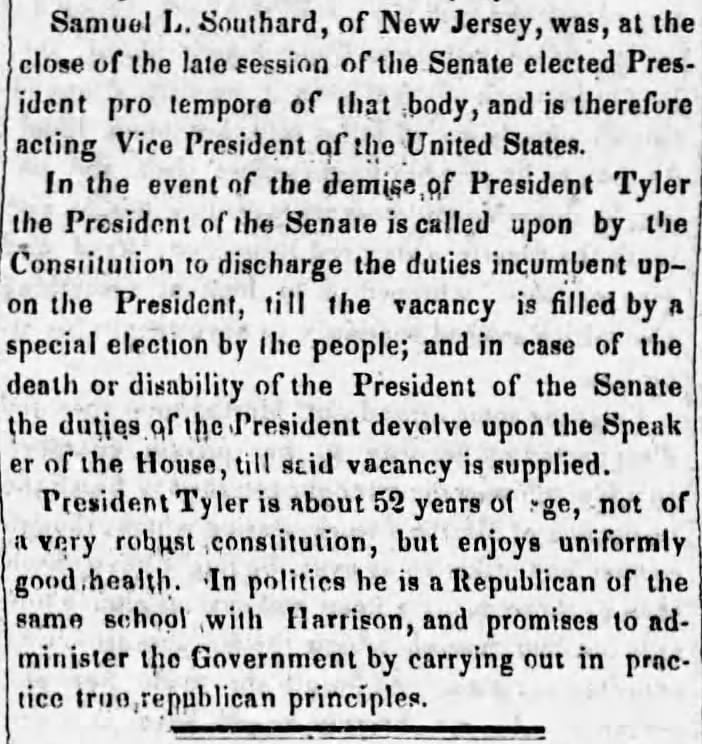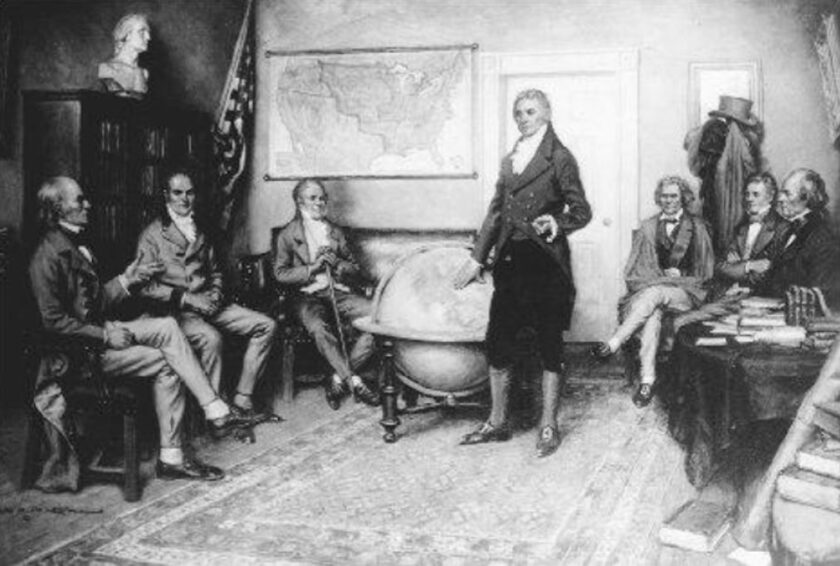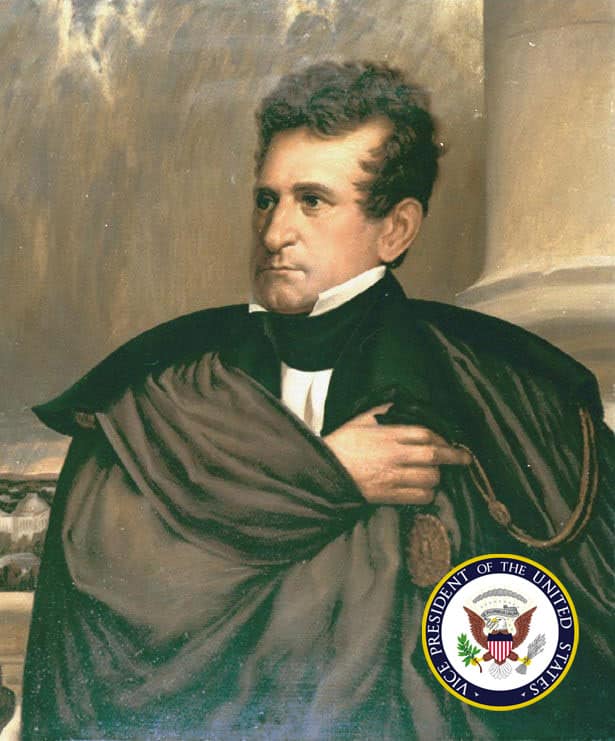While researching the Southard family of Basking Ridge, New Jersey, we uncovered something we never knew about Samuel Southard. MLH believes Basking Ridge’s own Samuel Southard was the Vice President of the United States for over a year after President William Henry Harrison died in 1841. Was he? Check out the research we’ve uncovered. Then you decide.
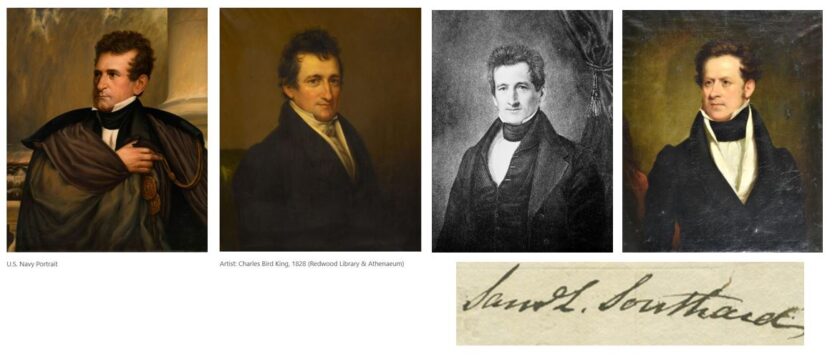
The Honorable Samuel Lewis Southard – Statesman, US Senator, Secretary of the Navy, and Vice President?
Born in Basking Ridge on June 9, 1787, the 9th of 13, Samuel was born to Henry and Sarah Southard two years after moving into the Boudinot estate up the road. Younger than Isaac by four years, at age 12, he attended the classical school at the Brick Academy under the direction of Reverend Robert Finley. Samuel then went on to college at Princeton University and graduated at the age of 17.
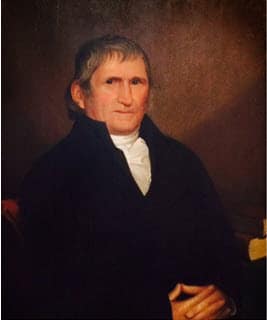
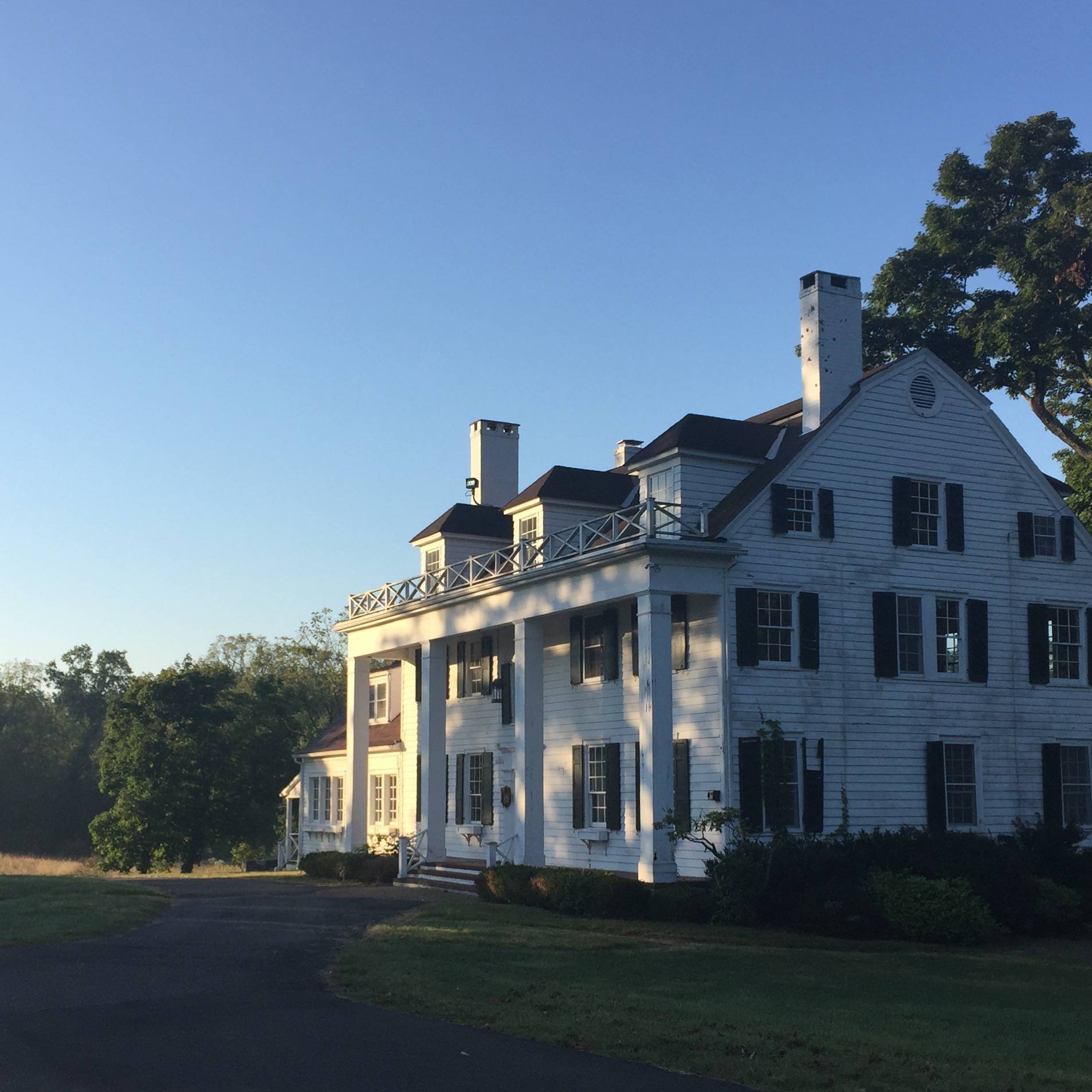
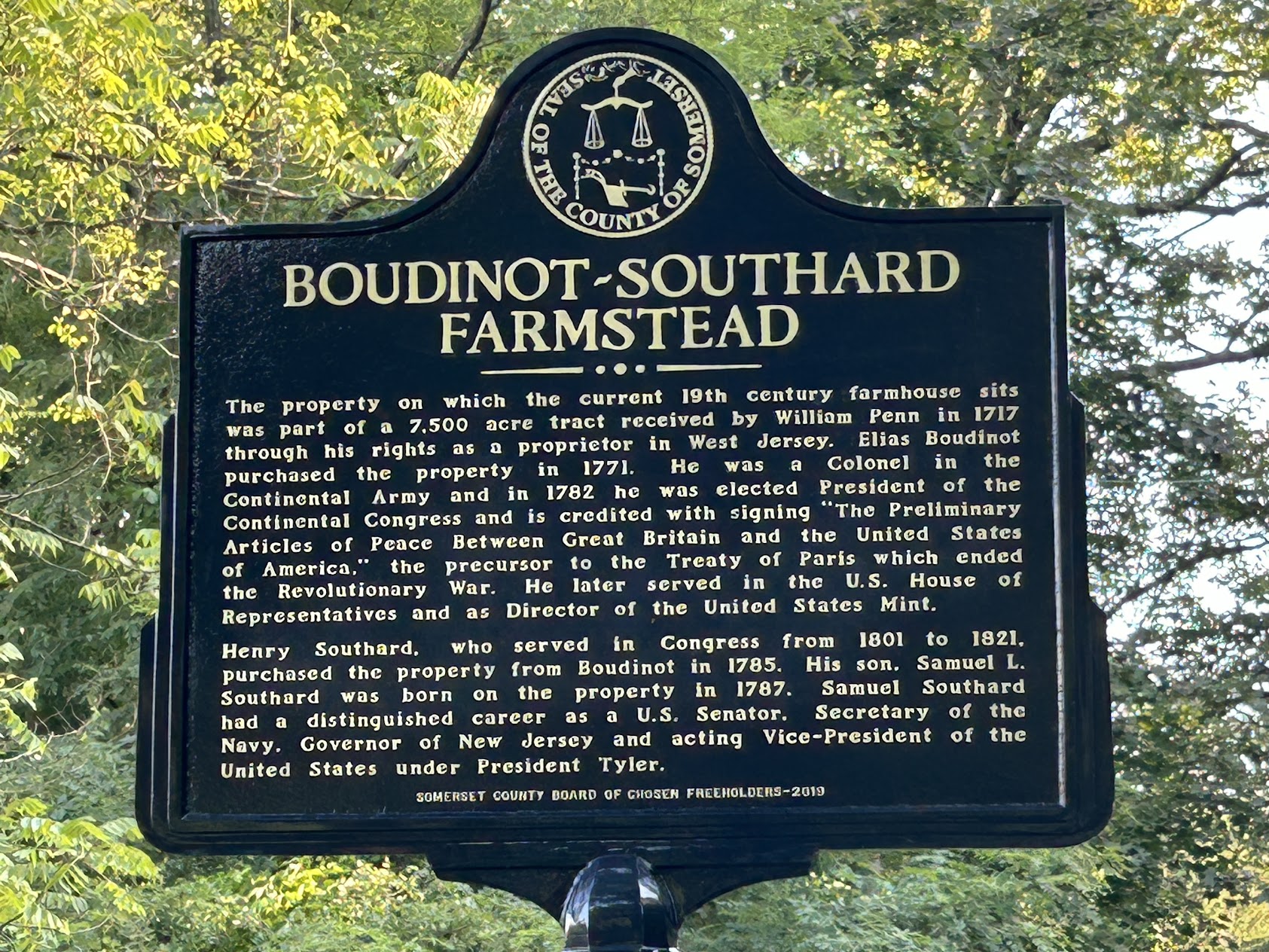
Samuel passed the bar in Hunterdon County while living in Flemington. Samuel’s lifetime accomplishments included being the 8th Secretary of the Navy, President Monroe and John Quincy Adam’s cabinet, New Jersey Attorney General, US Secretary of the Treasury, Secretary of War, Elected Governor over Peter D. Vroom by a vote of 40 to 24 by the joint session of the Legislature in 1832, he re-entered the U.S. Senate the following year. The destroyer USS Southard (DD-207) (later DMS-10), 1919–1946, was named in his honor.
1823 – President James Monroe was seen discussing the policy, later known as the Monroe Doctrine, with his advisors. From left to right, they are Secretary of State John Quincy Adams, Secretary of the Treasury William H. Crawford, Attorney General William Wirt, President Monroe (standing), Secretary of War John C. Calhoun, Secretary of the Navy Samuel Southard, and Postmaster General John McLean.
Source: Monroe Michigan
Around the same time that William Henry Harrison became President in 1841, Senator Southard was elected President “pro-tempore” (acting) of the Senate and was serving as such when, only a month after the inauguration on April 4, 1841, Harrison died of what was thought to be pneumonia. President Henry Harrison’s vice president, John Tyler, would immediately face a daunting task. The Constitution was very unclear about the concept of presidential succession. Tyler didn’t want to take the presidential oath, believing that his vice presidential oath covered the eventuality of his ascension to the presidency. His cabinet and many other officials disagreed, and Tyler took the oath in public on April 6, 1841, thus making Southard the new Vice President. Southard’s service as acting Vice President would last 422 days.
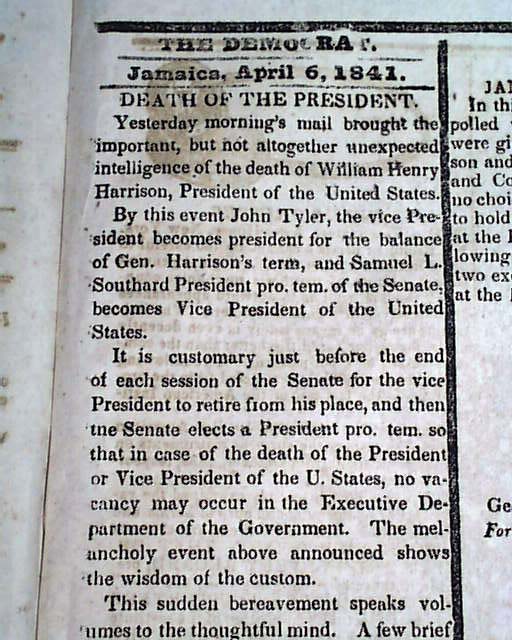
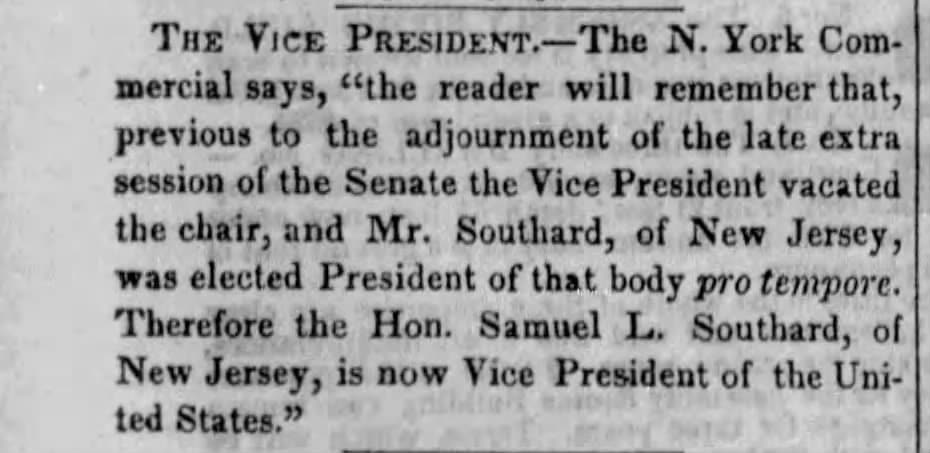
Whitehouse – President William Henry Harrison was the ninth President of the United States (1841), the oldest President to be elected at the time. On his 32nd day, he became the first President to die in office, serving the shortest tenure in U.S. and with him died the Whig program.
“As President presiding over the Senate of the United States, Samuel Lewis Southard of Basking Ridge, New Jersey became acting Vice President (called Pro-Tempore) from April 4, 1841 to May 31, 1842 after the death of President William Henry Harrison as Vice President John Tyler became President.”
Whitehouse.gov
Act of 1792
The Presidential Succession Act of 1792 provided for succession after the president and vice president: first, the president pro tempore of the Senate, followed by the speaker of the House.
We believe that Samuel Southard was the Vice President of the United States on April 4, 1841, after the death of President William Henry Harrison, the ninth President of the United States. MLHP
The U.S. Constitution and the Presidential Succession Act of 1947 outline the presidential order of succession. Cabinet officers’ succession is in the order in which their agencies were created.
- Vice President
- Speaker of the House
- President Pro Tempore of the Senate
- Secretary of State
Presidential succession is referred to multiple times in the U.S. Constitution: Article II, Section 1, Clause 6, the 12th Amendment, 20th Amendment, and 25th Amendment. The vice president is designated as first in the presidential line of succession by the Article II succession clause, which also authorizes Congress to provide for a line of succession beyond the vice president. It has done so on three occasions. The Presidential Succession Act was adopted in 1947 and last revised in 2006. The 25th Amendment also establishes procedures for filling an intra-term vacancy in the vice president’s office.
Samuel’s Health Issues
Samuel was also in poor health, and on May 3, 1841, about a month after President Harrison’s death, he resigned from the Senate in 1842. A few weeks later. In June, he (presumably his wife, Rebecca) went to Fredericksburg, VA, to visit his wife’s relatives, the Harrows. Meanwhile, mere Senator Southard was honored with “a hansom stag dinner.” During the meal “he was seized with apoplexy, and died shortly afterward”.
Failing health forced Southard to resign from the Senate. Funny, the next Senator taking Samuel’s seat, appointed by New Jersey Governor William Pennington, was William H. Dayton, also from Basking Ridge. Southard died in Fredericksburg, Virginia, on June 26, 1842,, at the age of 55. Samuel Southard was buried in Washington, D.C.’s Congressional Cemetery.
Former President John Quincy Adams added his own words of praise. Adams observed that Southard had proved himself a man of high caliber in six years as a colleague in the executive branch.
The soundness of his judgement, the candor of his disposition, the sweetness of his temper , and the firmness of his adherence to his own sense of right were, to me , as a colleague, and a confidential assistant and advisor, a treasure beyond all price.
Former President John Quincy Adams – Congressional Globe – 27th Congress
Timeline
- Born in Basking Ridge, Somerset County, N.J., June 9, 1787
- Member of New Jersey State House of Assembly, 1815;
- Associate Justice of New Jersey state supreme court, 1815-20;
- Presidential Elector for New Jersey, 1820;
- U.S. Senator from New Jersey, 1821-23, 1833-42; died in office 1842;
- U.S. Secretary of the Navy, 1823-29; New Jersey State Attorney General, 1829-33;
- Governor of New Jersey, 1832-33.
- Vice President of the United States, April 4, 1841 to May 31, 1842
- Senate Years of Service: 1821-1823; 1833-1837; 1837-1842
- Died in Fredericksburg, Va., June 26, 1842. Interment at Congressional Cemetery, Washington, D.C.
- Party: Republican; Anti-Jackson; Whig
Born and educated in Basking Ridge, Samuel Lewis Southard deserves to be recognized as Basking Ridge’s prodigal son!
The Mr. Local History Project

